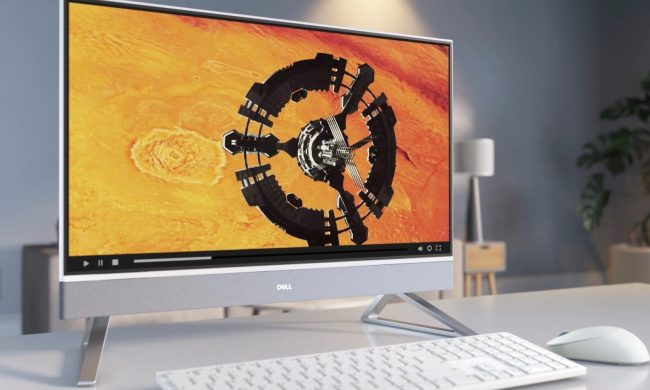









Virtual reality is finally crossing a threshold when everyone should be taking a closer look. Even Apple is joining in with its Vision Pro headset launching in 2024. As the number of VR headsets increases, getting the best one is important so you can truly appreciate what's possible. The challenge is finding the system that's right for you.
Before the $3,500 Vision Pro arrives, consumer VR headsets range from a surprisingly affordable $250 standalone device to a $1,600 VR headset that requires a powerful gaming PC. Plenty of intriguing games are available for every VR system mentioned below, so the only considerations are how big your budget is and what type of hardware you already own.
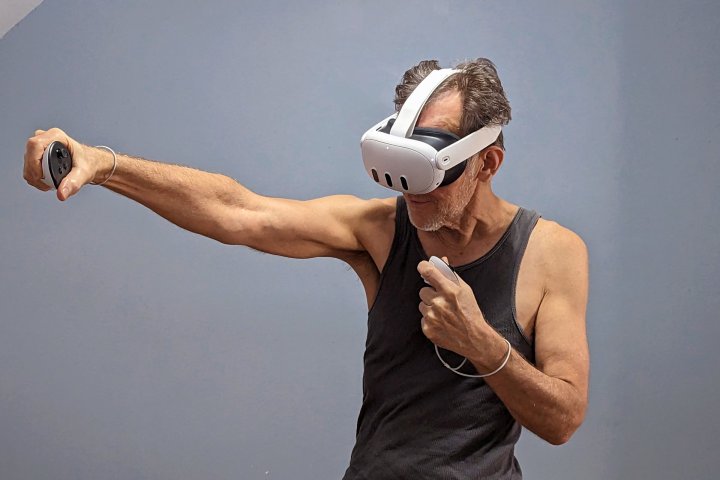
Meta Quest 3
Best VR headset overall
- Doubles Quest 2 GPU performance
- Crisper graphics with 30% more pixels
- Sharp, clear lenses without god rays
- Mixed reality is good enough to use a phone
- Depth sensor automatically maps your room
- Ringless controllers are less breakable
- Great price for a powerful VR headset
- Battery is still in front, adding face pressure
- Passthrough cameras are good, not great
- No silicone cover included
Meta took the winning formula of its Quest 2 and upgraded every component to the latest technology to create the Quest 3. Meanwhile the price is a reasonable $500, the same price you might pay for a flat-screen gaming console. No other company can match the value of the Quest 3 headset because Meta is undoubtedly cutting margins to a minimum, possibly losing money on every unit it sells.
The Quest 3 brings much higher performance, sharper displays and clearer lenses. It outperforms the Quest Pro in many ways, but keeps the same form factor as the Quest 2 with a front mounted battery and full light shield that might be uncomfortable after a couple of hours.
The Quest 3's Touch Plus controllers have also been upgraded and look similar to the Touch Pros of the Quest Pro, yet lack the advanced tracking. Still, the Quest 3 handles controller, head, and hand tracking very well.
Another notable upgrade gives the Quest 3 the best mixed reality experience on the market with full color and clarity that makes it possible to use your phone without removing the headset. It won't beat the Apple Vision Pro's quality, but exceeds the Quest Pro and everything else currently available.

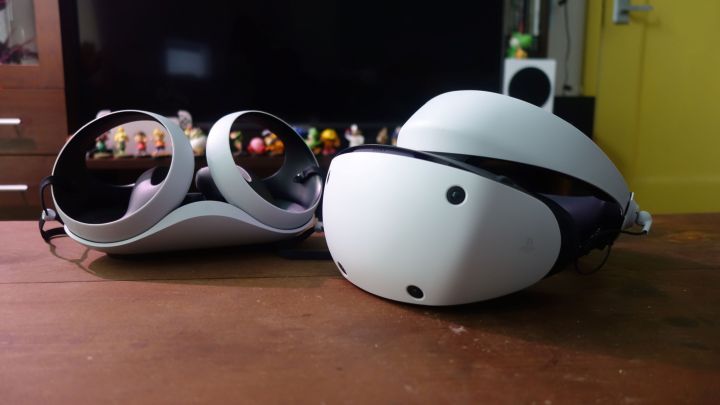
PlayStation VR2
The best VR headset for PS5 consoles
- Very comfortable
- Clear display
- Excellent Sense controllers
- Improved tracking and feedback
- Competitive specs
- Bulky wired design
- Costs more than a PS5
- Lacking games and direction
After seven long years, Sony decided interest in VR had risen, and technology had advanced sufficiently to justify a refresh of its aging PSVR accessory. The PlayStation VR2 is one of the most advanced headsets available but comes with some serious tradeoffs when compared to the Quest 2.
The PSVR2 requires a PlayStation 5 console, adding extra expense if you don't already own one. The tether is much smaller and lighter than that of the PSVR, but can still feel restrictive. If you are coming from a PCVR system, that won't be a concern.
The visuals rival the best PCVR systems, but the Fresnel lenses have a small sweet spot of clarity. At $550, the PlayStation VR2 is a great option for PlayStation 5 owners, adding high-powered VR with some great new titles. However, if you don't already have a PS5, there are cheaper options available through other platforms.

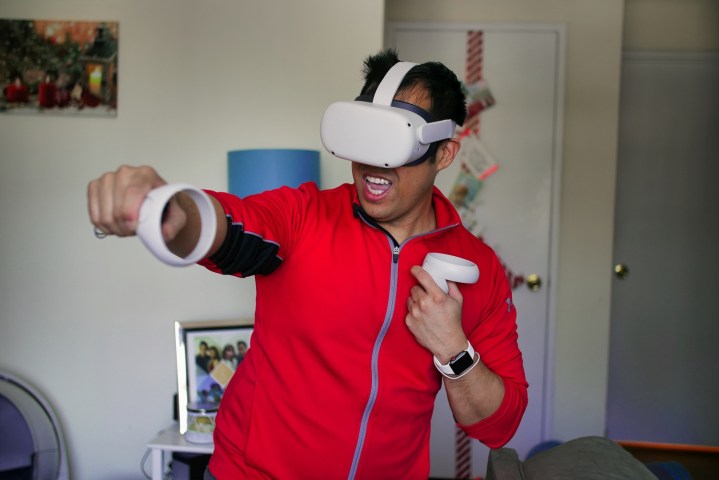
Meta Quest 2
Best budget VR headset
- Incredibly low price
- Wireless and standalone design
- 120Hz
- 1832 x 1920 pixels per eye
- Air Link to Windows PC
- Mobile processor
- Fresnel lenses blur at the edges
Meta's Quest 2 is still a phenomenal value. Right out of the box, you get inside-out tracking in a standalone device, with no need to set up base stations or be tethered to a computer. The display resolution and refresh rate are in line with many VR headsets. Other manufacturers simply can’t compete with Meta Quest 2's quality and features at such a low price.
Meta’s Quest 2 is the best budget choice, currently on sale for just $250 through the end of 2023. It has a huge library of standalone games and can wirelessly connect to a PC to run SteamVR titles as well. With innovative features like built-in hand tracking and movement tracking for fitness, Meta's least expensive VR headset offers incredible value even three years after launch.
The significantly improved Quest 3 joins the much more expensive Meta Quest Pro as upgraded models, and we'll talk about those standalone VR headsets below, but neither oust the Quest 2 from its long-held position as the best budget VR headset on the market.
Nothing can compete with the Quest 2's unique ability to deliver a compelling VR experience at such a low price.

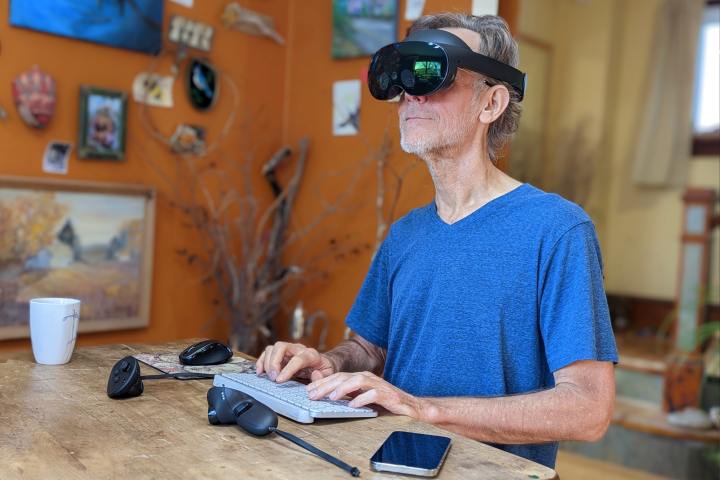
Meta Quest Pro
All-around best premium VR headset
- Very comfortable & no face pressure
- Top display clarity pancake lenses
- Good contrast with mini-LEDs
- Excellent controller tracking
- Improved multitasking performance
- Needs frequent charging or a power cord
- Lacking top productivity apps
Meta's productivity headset, the Quest Pro, arrived in October 2022 as the first standalone VR headset meant for work. It's also one of the best gaming headsets since it includes most of the best features of the Quest 2, is compatible with the same games, and offers greatly improved display quality, higher performance, and excellent controller accuracy.
Using pancake lenses and mini-LED backlighting, the display is brighter and crisper across the entire lens, while offering better blacks. The field of view has been increased to 106 degrees horizontally. That's not as wide as some competing headsets, but it's enough to make a difference if you've noticed the edges of the scene when using the Quest 2.
The downside is the price of $1,000, which is more than triple that of the Quest 2 and twice the price of the Quest 3. There are multiple reasons for the price increase, and it is still a bargain given the advanced technology packed into this all-in-one VR system. Its XR2+ chip offers 50% greater speed than the Quest 2 and enhanced 12GB memory boosts multitasking performance. The Quest Pro actually matches Apple's $3,500 Vision Pro in some ways, offering hand-, eye-, and face-tracking, as well as spatial computing, without connecting to a computer.
As a work device, it ticks most of the boxes and can connect to a Mac or PC when you run across a task that the Quest Pro can't handle. This is still a new concept that's rough around the edges, but it earned a place on our list of best VR headsets as the first standalone system with premium features designed for productivity.

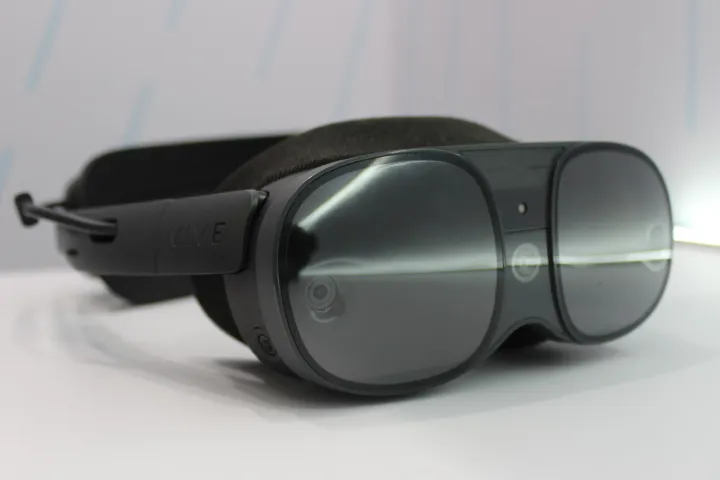
HTC Vive XR Elite
Alternate premium standalone
- Slim, modern headset design
- Color mixed reality view
- Lighter than most standalones
- Unique glasses mode
- Still uses controllers with rings
- Limited standalone library
HTC has a long history as a VR headset manufacturer and did a great job with the Vive XR Elite. This standalone headset is similar to the Meta Quest Pro in many ways. It has pancake lenses, a color passthrough camera, and inside-out tracking.
The Quest Pro launched at $1,500, while the Vive XR Elite provided these features at a much lower cost. Meta later cut a third off the price of its premium headset. HTC's headset is a nice alternative if you don't like Meta. The Vive XR Elite costs $100 more at $1,100 yet lacks the Quest Pro's large standalone gaming library, as well as its eye- and face-tracking technology.
The Vive XR Elite has some compelling features, including a unique glasses mode that allows you to replace the head strap and rear battery with earpieces, making it much lighter. In this case, you must connect to a PC to get power, but when sitting at a computer, it sounds like a nice option for work use.


Pimax Crystal
The sharpest VR headset you can buy
- Crisp 2880x2880 per eye resolution
- MiniLED backlighting increases dynamic range
- 125-degree FoV and 120Hz refresh rate
- Base stations aren't required
- PCVR requires a tether to a gaming PC
- Heavier than most headsets
Pimax pushes the limits of VR technology, and the Crystal is a perfect example. It's currently the sharpest and clearest consumer VR headset available. Each display delivers 2880 x 2800 pixels per eye, exceeding even the Varjo Aero, a VR headset favored by enterprise users. Combined with aspherical glass lenses and miniLED backlighting, the visuals are impressive.
Like other PCVR headsets, the Pimax Crystal requires a wired connection to a high-performance PC with a graphics card that can deliver 16 million pixels at a playable frame rate. A gaming PC with an Nvidia GeForce RTX 3080 or better is recommended.
The Crystal's eye-tracking cameras can animate avatars but also have the ability to increase frame rates with foveated rendering. Pimax is best known for VR-sim solutions where high frame rates are critical.
PCVR headsets typically require base stations for tracking and sometimes don't include controllers. The Crystal, however, has tracking built into the headset, so you don't need to buy and set up external tracking or purchase controllers. That makes the Pimax Crystal the same price as the Varjo Aero when the minimum accessories are added.
The Pimax Crystal does have a standalone mode, but the library is very limited. OpenBrush is the only notable title so you'll want to stick to SteamVR for gaming.

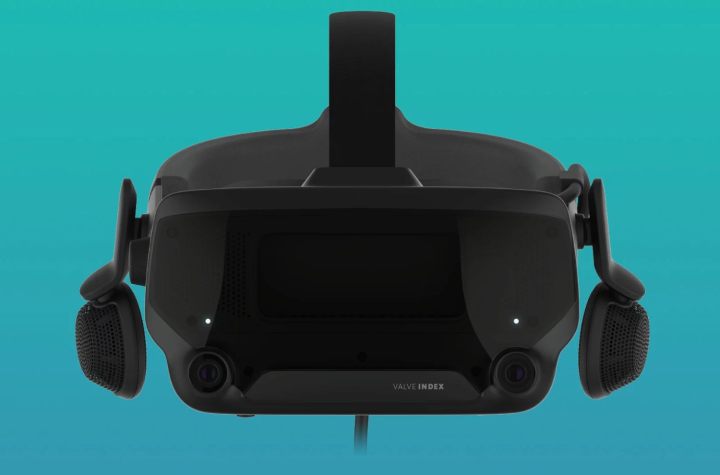
Valve Index
Classic SteamVR headset
- Fast 144Hz refresh rate
- 130-degree wide FOV
- Made by SteamVR developer Valve
- Great Knuckles controllers
- Resolution is lower than others
- Requires a Windows PC with a discrete GPU
It should come as no surprise that the Valve Index is on our list as a classic pick for SteamVR since both are created by Valve. The Valve Index has been around a long time, and the display resolution is lower than most, but it still hits the sweet spot for many users with a very solid design at a reasonable price for a versatile, PC-based VR system.
The display resolution is limited to 1440 x 1600 pixels per eye, but it has a wider-than-average 130-degree field of view and one of the best refresh rates at up to 144Hz. The Valve Index is on the heavy side, but it has a very comfortable head strap. The Index uses external base stations for tracking, which are more of a hassle to set up, but provide additional options for tracking accessories and specialized controllers.
A $1,000 Valve Index VR kit includes a headset, two controllers, and two base stations. Newer base stations are available but most of this technology has remained unchanged since launching in 2019. Rumors suggest that Valve is working on a new, higher-resolution model, but there have been no recent hints of a launch date. If you like the look of the Valve Index, it's still a good PCVR headset, despite its age.
A Meta Quest Pro or an HTC Vive XR Elite cost about the same, offer standalone capabilities, and can connect wirelessly to a PCVR system. While these competing solutions provide better clarity without cables running everywhere, the Valve Index offers greater compatibility if you are interested in third-party motion simulation chairs or other advanced accessories.

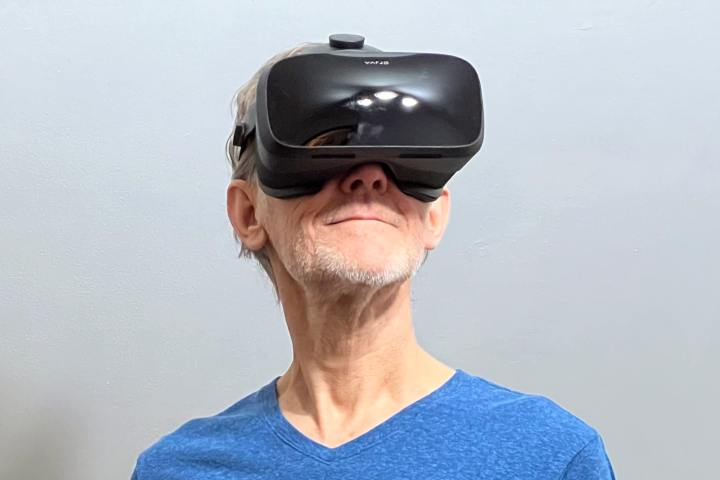
Varjo Aero
An affordable enterprise-grade VR headset
- Sharp 2880 x 2720 per eye resolution
- The headset is very comfortable
- Eye-tracking with automatic fit adjustment
- Price dropped to $990
- Requires a Windows PC with a powerful GPU for best quality
- Doesn't come with controllers or base stations
The Varjo Aero is one of the best PCVR headsets available, with its amazing display quality and great comfort. The super sharp 2,880 x 2,720 resolution, clear optics, and mini-LED backlighting exceed every other device available currently.
This ultra-premium PCVR headset once cost nearly $2,000 for the headset alone, putting it out of reach for most shoppers. Varjo dramatically cut the price in September, making the Aero worth considering. It's now just $990, about the same as many other VR headsets on this page.
However, that's the price for the headset alone. By the time you add Steam VR controllers, base stations, and a powerful PC that's worthy of pairing with the Varjo Aero, the cost will climb to around $1,600. Varjo designs for business and, like the Quest Pro, the Aero is meant for work use. Of course, you can play Steam VR games, also.
We went hands-on with the fantastic Varjo Aero and were impressed with the quality. If you already have a premium PCVR gaming system and want a headset to match, this might be the right VR headset for you.


HP Reverb G2
Best for Windows Mixed Reality
- Low-cost
- Lightweight
- Sharp 2160 x 2160 pixels per eye
- Optics blur around the edges
- Requires a Windows PC with a discrete GPU
HP is best known as a computer and printer manufacturer, but it's also a solid choice for getting started with virtual reality. The Reverb G2 has a relatively low price for a PCVR headset, a high-resolution display, and a competitive field of view. It’s a great way to dip a toe into Windows Mixed Reality and is compatible with SteamVR.
The HP Reverb G2 does have some shortcomings. The display refresh rate is somewhat slow at 90Hz, and this could make fast movements become a little disorienting. While the central portion of the display is quite crisp, the edges are soft, so there are trade-offs at this low price compared to other PCVR systems.

Frequently Asked Questions
If you are unsure of whether you should get a PCVR system or a standalone VR headset, the latter is usually the correct choice. A Quest 2 is a low-cost solution that provides good VR gaming and fitness. If you want a higher-quality option, the Quest 3 has improved displays while enjoying the same huge library of VR titles as its budget-priced sibling.
As all-in-one solutions, standalone headsets don't require base stations and come complete with controllers, making it easy to get started. While not required, a standalone VR headset can connect to a Windows PC via a cable (sometimes wirelessly) to play more demanding SteamVR games.
If you already own a fast PC with a powerful GPU, you might want to step up to a Pimax Crystal to enjoy the super-crisp visuals in virtual reality. For those interested in VR for work, the low-cost HP Reverb G2 might suffice.
When Apple announced its first VR headset, the Vision Pro, it validated the industry. In some ways, it blows away the competition. Pitted against Meta's Quest Pro, Apple's headset shines, with a massive performance advantage and much better mixed reality. The Vision Pro's display sharpness is crisper than the Pimax Crystal and Varjo Aero.
Along with the 4K-per-eye display resolution and desktop-level performance in a standalone device, Apple's Vision Pro promises the best mixed-reality passthrough, eye-tracking that's good enough to use for selecting controls, and a near-effortless finger pinch to activate. It's a very unusual design for a VR headset and Apple presents the Vision Pro as a spatial computer, not a VR gaming system. For gaming, Apple will support traditional 2D game controllers, instead of immersive controllers that track their location in 3D space.
Despite some clear advantages, there's an old saying: "content is king." Apple won't be able to compete with the huge library of games and apps available via PCVR and Meta's Quest app store. Price is clearly a major barrier since the Vision Pro's $3,500 cost is simply out of reach for most people.
The VR headsets in our list are the best available right now, but virtual reality technology is advancing rapidly. Be sure to check back in the coming months for news about several exciting, new VR headsets. We're continuing to learn more about Apple's incredibly powerful yet expensive Vision Pro.
Apple isn't the only manufacturer working on next-gen VR headsets. The Immersed Visor came out of nowhere, a surprisingly affordable VR headset ($1,000) with a glasses form factor that matches the 4K-per-eye displays and many other capabilities of the Apple Vision Pro. Samsung is also working on a competing solution, still under wraps, as that historic tech rivalry begins anew in the VR category.
All three are planning to launch in 2024, so our expectations for top-quality VR headsets could be completely rewritten within months.


